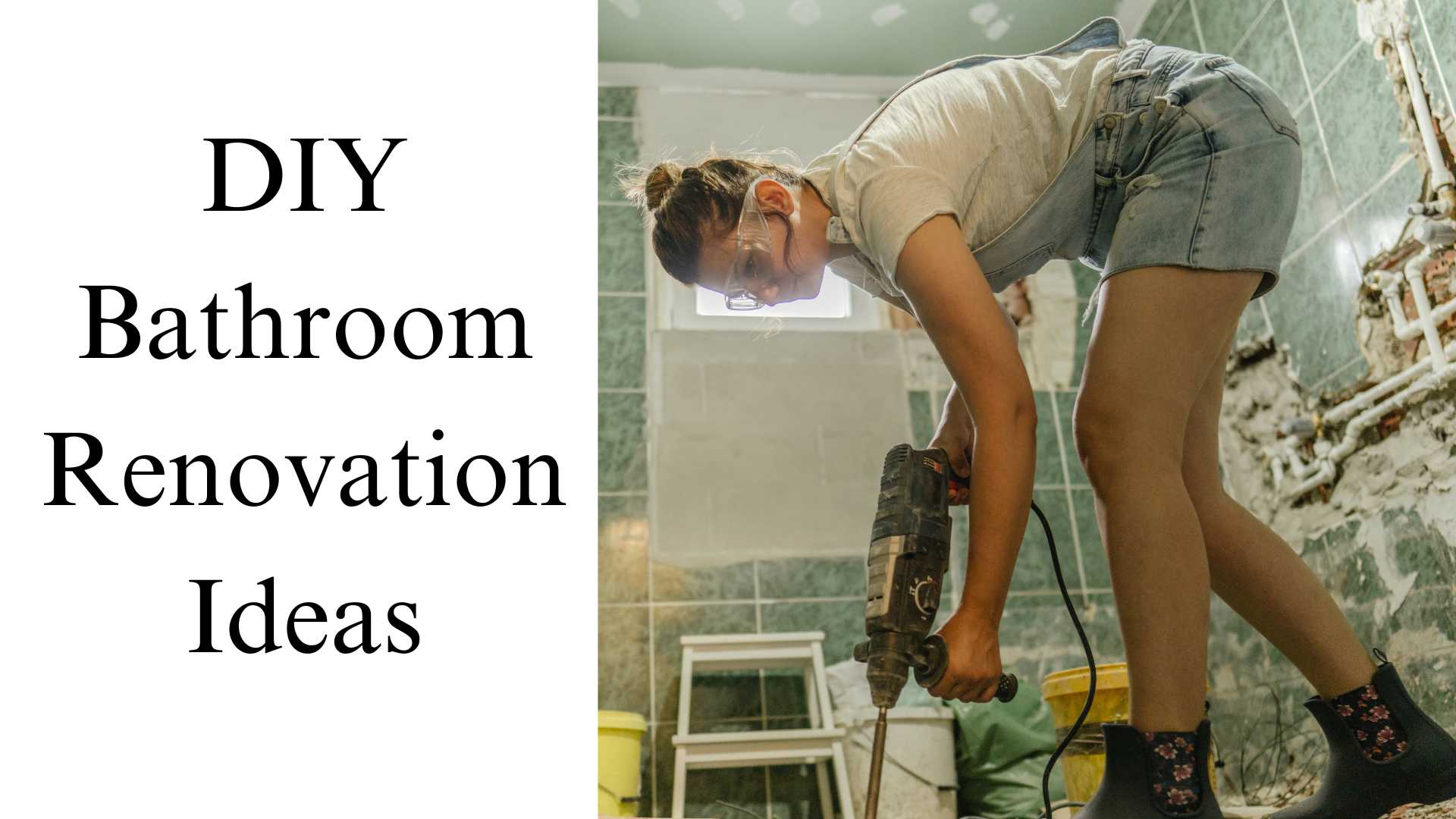Embarking on a bathroom renovation project can be an exciting yet daunting task. The key to a successful renovation lies in proper planning and organization. Without a well-structured plan, you may be in a sea of never-ending decisions and unexpected complications that could drive your project off schedule and over budget. This article aims to be your guiding compass, providing a comprehensive bathroom renovation checklist to steer your project toward completion while keeping your sanity and budget intact.
Let’s transform that vision into reality by understanding the importance of each step in your renovation journey.
Determine Your Renovation Goals and Priorities
The first step in your renovation journey is clearly defining your goals and priorities.

Are you going for a complete makeover or just updating a few elements?
Is increasing storage space your primary goal, or do you want to add a touch of luxury with a soaking tub or a steam shower?
Prioritize your needs and wants to get a clear picture of what your renovated bathroom should look like.
Set a Realistic Budget for the Project
Once your goals are well-defined, it’s time to set a budget. A realistic budget controls expenses and helps make informed decisions about materials, designs, and labor costs.
Consider all potential costs for materials, labor, permits, and unexpected contingencies. Remember that while opting for the cheapest options is tempting, quality should never be compromised.
Remember that a well-executed, quality renovation can add significant value to your home.
Printable Bathroom Renovation Checklist
Research and Inspiration
Embarking on your research journey is an integral part of your pre-renovation planning. Collect ideas and inspirations from home improvement magazines, interior design websites, and renovation blogs. You may also explore social media platforms such as Pinterest and Instagram, which are treasure troves of design ideas. Look for themes, layouts, color schemes, bathroom fixtures, and finishes that align with your style and functional needs.
Create a Vision Board
Once you have considerable inspiration collected, distill this into tangible elements that resonate with your style and functional goals. A vision board, either physical or digital, can be an effective tool to visualize your ideal bathroom.
Arrange images of bathroom designs, color palettes, fixtures, tiles, and more into a collage. This visual representation will help you and any professionals you work with understand your desired outcome better.
Use Design Apps
In today’s digital age, numerous design apps allow you to remodel your bathroom virtually. These apps provide a realistic bathroom view and can help finalize your design style. You can experiment with different layouts, fixtures, colors, and materials until satisfied. This step can significantly aid in eliminating any design elements that do not work and adding ones that enhance your bathroom’s overall aesthetic and functionality.

Keep in Mind Practical Considerations
While focusing on design and aesthetics is essential, don’t forget practical considerations. For example, if you have young children or plan to age in place, incorporating safety features such as non-slip flooring and grab bars may be significant. Likewise, if sustainability is a priority, consider water-saving fixtures and energy-efficient lighting. Balancing your design aspirations with practical necessities will ensure you end up with a bathroom that is not only beautiful but also functional and comfortable.
The research phase can be time-consuming, but remember, the more thorough your preparation, the smoother your renovation process will be.
Assessing Your Current Bathroom
Inspect every corner, from the ceiling to the flooring, and note any visible damage, such as water stains, cracked tiles, or mold growth. These could signal underlying issues that need to be addressed during the renovation.
Inspect Electrical Systems and Ventilation
Next, inspect the electrical systems, including light fixtures and outlets. Ensure they’re up to code and in good working condition. Likewise, check the ventilation in your bathroom. Proper ventilation is essential for maintaining indoor air quality and preventing mold growth. If your bathroom lacks proper ventilation, consider adding an exhaust fan during the renovation.
Analyze Storage Spaces
Take a look at your current storage solutions. Are they adequate, or are additional cabinets needed? A well-planned bathroom incorporates enough storage for toiletries, towels, and other essentials. Your renovation is an excellent opportunity to improve storage spaces and make your bathroom more functional.
Evaluate the Plumbing
Inspect your current plumbing system. Look for signs of leaks or corrosion on pipes and fixtures. If your home is older, you may have galvanized steel or polybutylene pipes that could need replacing to prevent future problems. Your renovation could be an opportune time to upgrade your plumbing system to more durable materials such as PVC or copper.
Document the Existing Layout
Finally, document the existing layout of your bathroom. This will provide a reference point when planning your new design. If your current layout doesn’t work, consider how it can be improved.
Perhaps the toilet is too close to the door, or the shower could be positioned elsewhere to create more space. Your renovation is a chance to remodel your bathroom layout to better suit your needs.
Design and Layout
When remodeling your bathroom, the layout is crucial in ensuring its functionality and aesthetics. There are numerous bathroom layouts to consider, such as single-wall, two-wall, or three-wall layouts.
A single-wall layout, with all elements arranged along one wall, can be cost-effective but may not provide the most efficient use of space.
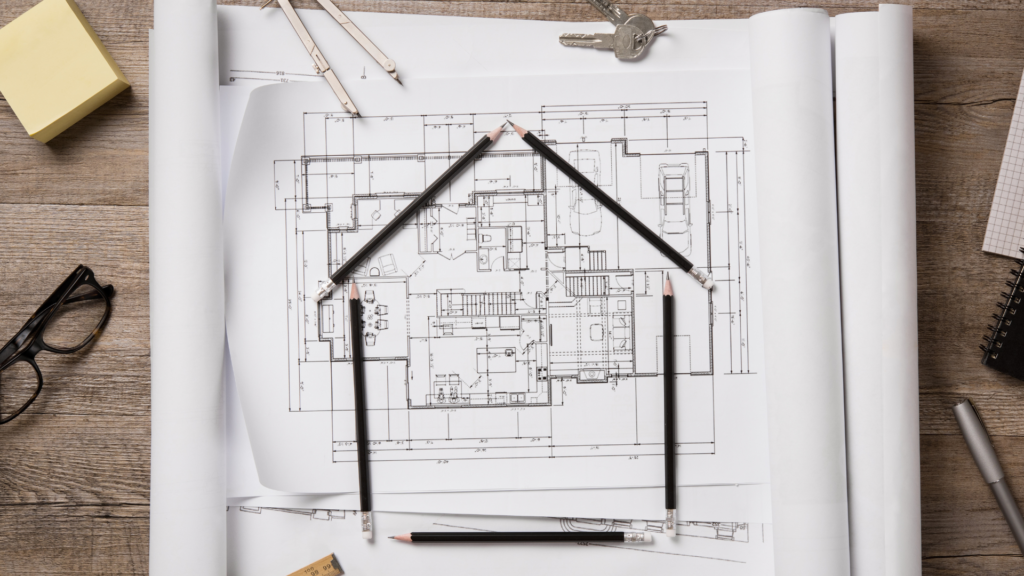
A two-wall layout offers more flexibility, with fixtures spread across two walls, allowing better movement.
A three-wall layout is the most flexible and comprehensive but can also be the most challenging and expensive. Successful budget management is about cutting your bathroom remodel costs and making wise and informed financial decisions is vital. The layout you choose should be guided by your bathroom dimensions, the placement of existing plumbing and fixtures, and your renovation goals.
Optimizing the use of available space is critical in a bathroom where functionality is paramount. Consider how you can maximize space with your chosen layout.
For instance, can a shower-tub combo create more space than a standalone tub and shower?
Would a wall-mounted sink provide more room than a vanity?
Assess your needs and preferences, think creatively, and don’t hesitate to seek professional advice. Remember, a well-planned layout can enhance your bathroom’s flow, function, and aesthetic appeal, making it a joy to use daily.

The design phase also involves selecting fixtures, finishes, and accessories that reflect your style and meet your functional needs.
Consider tiles, lighting, color scheme, and fixtures like sinks, toilets, and showers. Your choices can dramatically impact the look and feel of your bathroom, so take your time to explore options.
For instance, larger tiles can create a sense of spaciousness, while a well-chosen color scheme can create a soothing or invigorating atmosphere.
Regarding fixtures, consider factors like comfort, water efficiency, and ease of cleaning when making your selections. It’s your space, so don’t be afraid to make it your own.
Fixture and Material Selection
Fixtures such as sinks, bathtubs, showers, and toilets significantly influence the functionality and aesthetics of your bathroom. I’ve found that the best approach is to balance style, comfort, and practicality.
Consider the overall design aesthetic you’re aiming for and choose fixtures that align with that vision. Remember to consider the size and space of your bathroom and select fixtures that will fit comfortably. It’s also essential to consider long-term durability, maintenance, and water efficiency in your selections.
Next, the materials you select for your flooring, walls, and countertops can dramatically alter the look and feel of your bathroom. When selecting materials, consider durability, maintenance, safety, and style.

For example, you might choose tiles, natural stone, or laminates for flooring and countertops. Each material has pros and cons, such as varying levels of durability and maintenance requirements.
For walls, you might consider paint, tiles, or wall panels. Again, consider the maintenance, longevity, and look you aim for.
Lastly, don’t underestimate the impact of more minor details. The finishes you choose for your fixtures, such as chrome, brushed nickel, or oil-rubbed bronze, can significantly affect the overall aesthetic of your bathroom.
Similarly, the style and placement of lighting can dramatically change the atmosphere in the bathroom. The choice of accessories like mirrors, towel bars, and even soap dispensers can also play a considerable part in achieving your desired look.
Remember, every detail matters when creating a cohesive and stylish bathroom design.
Hiring Professionals
When selecting a contractor for your bathroom remodeling, it’s essential to do thorough research.
Start by asking for recommendations from friends and family who have recently completed similar projects. This can often provide a reliable shortlist of contractors.
Supplement this by conducting online research to read reviews and assess the reputation of each potential contractor. This step will help you understand previous clients’ experiences and the contractor’s track record.
Once you have your shortlist, conduct interviews with each potential contractor. This is your opportunity to ask critical questions about their experience, expertise, and project management approach.

Discuss their past projects similar to yours and ask for before and after photos. It’s also essential to discuss timelines and the communication process during the project. You want to ensure that you select a contractor who is capable and a good fit for you.
Finally, always check your potential contractors’ references and credentials. This includes verifying any necessary licenses and insurance, contacting previous clients to hear firsthand about their experiences, and ensuring that your contractor has the required qualifications and a solid reputation.
Remember, a renovation is a significant investment, and you want to ensure it’s in capable hands.
Determining Required Permits for Your Renovation
The first step in adhering to codes and regulations for your bathroom remodel project is determining whether permits are required. This can be a complex process, with requirements varying significantly based on locality and the scope of your project.
For instance, a simple fixture replacement may not necessitate a permit, while significant structural changes likely will.
Check with your local government or municipal office for specific guidelines. It’s always better to be safe than sorry, as starting a renovation without the necessary permits can result in penalties and delays.
Familiarizing Yourself with Local Building Codes and Regulations
Once you know the required permits, you must familiarize yourself with relevant local building codes and regulations. These rules ensure that all construction and renovation projects meet safety and quality standards.
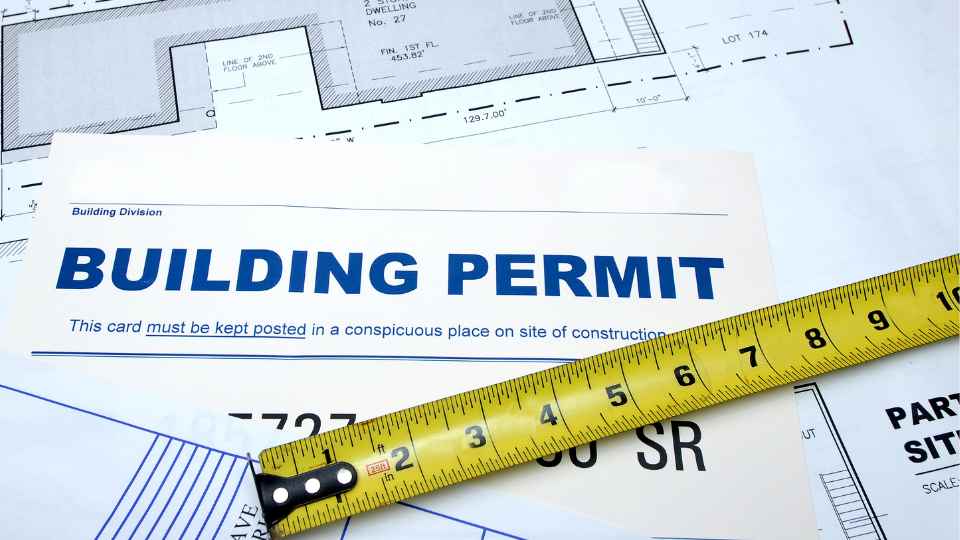
The codes can cover aspects like electrical and plumbing work requirements, structural changes, proper ventilation, and more. They can be complex and sometimes tedious, but adhering to these regulations is essential.
Non-compliance risks penalties and can lead to safety issues down the line.
Getting Professional Assistance to Navigate Permits and Regulations
While this may seem overwhelming, remember that professional assistance is available. Hiring a seasoned project planner or a licensed contractor with experience in bathroom renovations can be invaluable in navigating these complexities.
These professionals are current with the latest building codes and regulations and understand the process of acquiring necessary permits. They can guide you through the paperwork and ensure your renovation is compliant, removing the stress and ensuring a smooth, legal renovation process.
Remember, a successful bathroom renovation isn’t merely about a beautiful end product but also about the journey to get there, which includes following all necessary procedures and regulations.
Project Timeline
Creating a renovation schedule is pivotal to managing your project effectively. Start by identifying your project’s start and end dates. These should be realistic, accommodating both planned tasks and potential delays.
The start date should allow for necessary preparatory tasks such as obtaining permits or ordering materials. The end date should ideally provide some buffer time for unforeseen obstacles, ensuring your project doesn’t drag on indefinitely.
Discussing these dates with your contractor and agreeing on them before starting the renovation work is crucial.
Breaking down your timeline into phases helps manage the project more efficiently. Each phase signifies a significant stage of your renovation, for instance, demolition, plumbing, installation of fixtures, or painting.
Identify the tasks under each phase and estimate the time required for each. Ensure to include buffer time in each phase for unexpected incidents. This phase-wise approach lets you track progress more effectively and identify delays early.
It’s essential to note that a renovation schedule is not a static document. Instead, it should be a living document that adjusts to changes as the project progresses.
Regularly revisiting and updating the schedule will align you, your contractor, and all other stakeholders. This dynamic approach will ensure everyone is aware of the project’s current status, upcoming tasks, and any changes in the timeline.
Remember, effective communication throughout the project is critical to a successful renovation.
Milestones and Checkpoints
Identifying key milestones and checkpoints in your renovation project is fundamental to maintaining control and steering the project toward a successful completion.
Milestones are significant events or stages in your project, such as completing the demolition phase or installing new fixtures. They serve as markers that help you measure progress, ensuring you are on track with your timeline.
On the other hand, checkpoints are pre-determined points where you assess the project’s status and make necessary adjustments. They allow you to evaluate if the project aligns with your expectations and plan.

Setting deadlines for each renovation phase is a crucial part of project planning. Deadlines act as motivators, ensuring each task is completed promptly. They also help manage the expectations of all stakeholders involved, from the homeowner to the contractor and suppliers.
Deadlines should be realistic, considering the complexity of each phase, the availability of resources, and potential challenges that may arise. Remember, the purpose of these deadlines is not to rush the process but to keep the project moving steadily toward completion.
However, it’s essential to note that while milestones, checkpoints, and deadlines are integral to success, they should not be rigid.
Progress may not always follow the exact path you initially anticipated. There could be unexpected delays or challenges, and flexibility will be required. Regularly reassess your project plan, adjusting your milestones and deadlines as necessary.
This approach allows you to maintain control of the project, adapting to changes without compromising the overall project’s success. After all, effective project management in renovation is as much about planning as it is about adaptability and problem-solving.
Budget Management
Budget management is an integral part of any renovation project. It’s critical to keep a detailed record of all your expenses from the beginning until the completion of the renovation.
This includes costs for materials, labor, permits, and any other expenses that may arise during the project.
Maintaining meticulous records not only helps you keep track of where the money is going but it also allows you to compare your actual spending with the initial estimates. This comparison can be a valuable tool for future projects, helping you budget more accurately.
Monitoring spending is equally important to ensure you stay within the budget. Regularly review your cost records and compare them with your budget plan.
If your expenses are trending higher than the budget, it might be time to reassess and adjust your plan. Remember, the goal is to complete the renovation without unnecessary financial stress.
This might mean making tough decisions, such as prioritizing certain aspects of the renovation over others or considering cost-effective alternatives for materials or labor.
However, staying within budget doesn’t mean cutting corners in areas that matter. It’s essential to strike a balance between cost and quality. Always consider the long-term implications of your decisions.
Trying to save money by compromising on quality may lead to higher repair and maintenance costs in the future. Successful budgeting is about cutting costs and making wise and informed financial decisions.
Contingency Fund
Renovations, by nature, can often bring surprises and costs. It is, therefore, prudent to allocate a portion of your budget toward a contingency fund. This fund acts as a safety net, providing financial resources for any unexpected expenses arising during the renovation process.
These could include unforeseen structural issues, material price increases, or additional labor costs. A standard rule of thumb is to set aside around 10-20% of your project budget for contingencies. Knowing you have resources to cover unexpected costs, this fund gives you peace of mind.

These unexpected incidents can cause your renovation costs to rise. However, having a contingency fund ensures you can manage these additional expenses without jeopardizing your project or causing unnecessary financial stress.
Adequate preparation is critical in successful renovation projects. Always anticipate that there could be surprises along the way. Understanding this will help you manage your expectations and avoid disappointment.
Remember, it is better to allocate funds for contingencies and not need them than to encounter unexpected costs without a financial safety net. Therefore, always include a contingency fund in your renovation budget–an essential aspect of sound project planning and management.
Construction and Renovation
Demolition and Preparation
Starting construction and installation in a renovation project signifies a transformative phase where the planning and preparation materialize into tangible results.
The first step in this process is constructing the basic framework or the “skeleton” of the space. Skilled craftsmen and builders will perform tasks such as framing walls, installing windows and doors, or laying the foundation for a new floor.
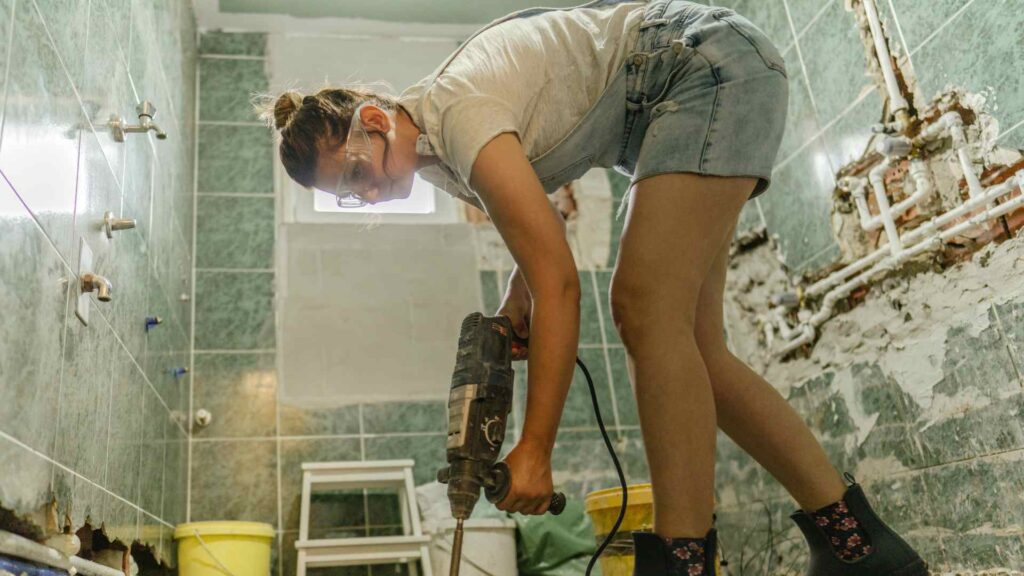
Throughout this process, it’s crucial to maintain regular communication with the construction team, ensuring everything aligns with the plans and specifications.
The next step involves installing vital elements such as plumbing fixtures, electrical wiring, and HVAC systems. While these elements may not be visually prominent in the finished space, their functionality is crucial for comfortable living.
This phase also includes the application of insulation and drywall, which begin to define the space visually. You must work closely with the professionals handling these installations to ensure that the work complies with the building codes and meets the project’s quality standards.
Installation and Construction
Overseeing the installation of plumbing and electrical systems is a critical component of the construction phase. This involves close coordination with skilled plumbers and electricians to ensure the systems are installed accurately and safely.
Ensuring that the plumbing and electrical systems are installed correctly is paramount, as any mistakes can lead to significant issues down the line. Ensuring these installations comply with the local building codes and regulations is equally important.
Monitoring the progress and quality of work throughout the renovation process is vital. This means routinely checking the contractors’ work and promptly addressing any issues.
Regular checks also help identify potential issues early, allowing for timely modifications or corrections. This ongoing monitoring also keeps the project on schedule, ensuring the various renovation elements are completed within the planned timeframe.
Documenting the process throughout the renovation is invaluable for future renovation endeavors. Keeping a record of the work completed, any issues encountered, and how they were resolved can serve as a helpful guide for future projects.
Documenting the process also gives homeowners a clear understanding of the work that has been done, which can be helpful for maintenance and repair work in the future.

It’s important to capture details such as the materials used, the brands of the fixtures installed, and any warranty information on your bathroom remodel checklist.
This documentation can also serve as a reference point for assessing the cost and time effectiveness of the project, offering insights for future planning and budgeting.
Final Touches
Finishing and Detailing
Applying the finishing touches to your renovation project is a highly satisfying stage. This is where your vision comes alive: painted walls, beautiful tiles, and shiny fixtures.
You get to see the textures and colors you’ve chosen come together, giving the space its unique personality. It’s also the stage where you can add small details that make the space truly yours, such as custom cabinetry handles, distinctive light fixtures, or unique art pieces.
These details might seem minor, but they significantly enhance the overall design and create a genuinely personalized and unique space.
Inspection and Quality Assurance
The final stage of the renovation involves conducting a thorough inspection of the work done to ensure everything is up to your expectations. This is where the importance of quality assurance comes into play.
No matter how small, every detail should be reviewed to ensure that it meets the agreed-upon standards and your satisfaction.
It’s also crucial to check that all the work completed in your home renovation complies with local building codes. Any issues identified during this stage should be addressed immediately with your contractor.
After all, your home is a significant investment, and its renovation deserves nothing less than the highest quality work.
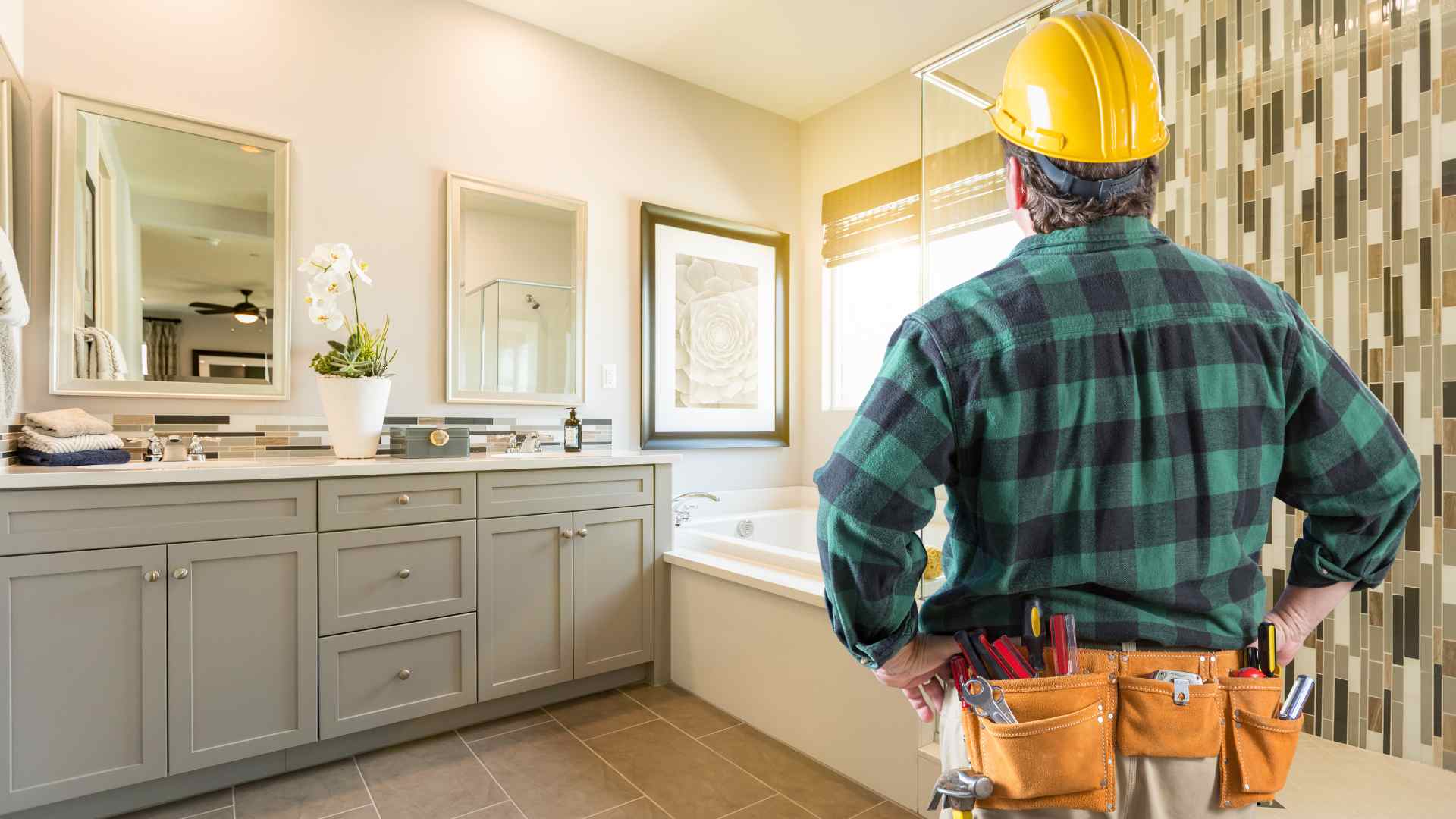
Conclusion
A meticulously planned bathroom remodel checklist is not merely a list but a strategic roadmap guiding your renovation journey.
This well-curated instrument structures your renovation plan, ensuring no critical aspect gets overlooked. It serves as a compass, keeping your project on track and schedule, and helps you navigate the often chaotic and overwhelming terrain of remodeling.
Furthermore, a comprehensive checklist ensures you consider a renovation project’s intricacies, including permits, designs, installations, inspections, and final touches.
Involving yourself in a bathroom remodeling project without a well-thought-out checklist is akin to venturing into unfamiliar territory without a map.
You could easily get lost in the myriad of tasks and decisions, leading to costly mistakes, delays, and a possible compromise on quality.
Therefore, I highly encourage you to utilize this checklist as a blueprint for your bathroom renovation projects. This guide, born out of the vast experience and thorough planning, not only helps you to ensure a seamless execution but also assists you in realizing your vision for a perfect bathroom.
Remember, a well-planned journey is a joy and a reassurance, especially for renovation projects.



